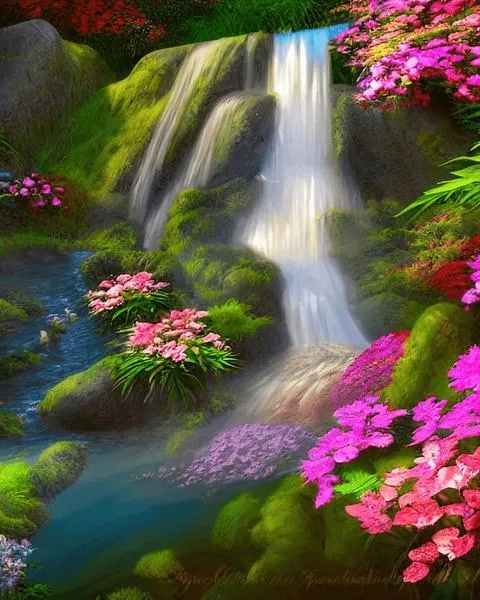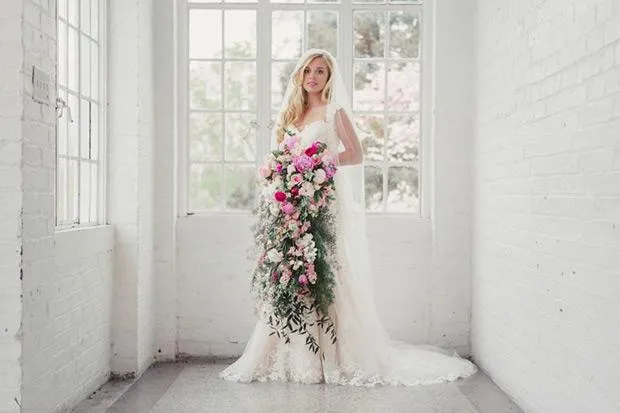Flowers That Cascade: A Carefully Curated Guide
Gardening is a passion of mine, and one plant type I consistently admire are flowers that cascade. From my experience as an avid gardener, these beautiful bloomers not only look lovely spilling over edges but also provide unique growing challenges. In this article, I’ll walk through various cascade-friendly flowers and vines as well as tips for cultivating them based on their specific needs and characteristics. By the end, you’ll have the knowledge to start a stunning cascading floral display of your own!
What Are Flowers That Cascade?
Flowers that cascade, sometimes called spillers, are plants designed by nature to trail or spill gracefully over the sides of containers, walls, trellises or other structures. Their long, arching stems allow them to drape downward, leaving a lovely impression en masse. While many familiar flowers like petunias and impatiens can cascade, there are certain varieties specifically bred for this purpose.
Top Cascading Flower Choices
- Bacopa (Sutera cordata) – This succulent plant spreads rapidly, cascading up to 3 feet. Its tiny lavender, pink or white flowers bloom non-stop in the heat of summer. It’s somewhat drought tolerant once established and thrives in partial sun.
- Lobelia (Lobelia erinus) – With its trailing stems and clusters of blue, white, pink or purple blooms, lobelia is a classic cascading annual. It grows vigorously and provides stunning color for borders or containers from spring to fall. You basically can’t go wrong with lobelia!
- Million Bells (Calibrachoa) – These cute little tubular flowers resemble petunias but come in a wider array of colors. Million bells really live up to their name, covering the trailing vines in constant blooms. They love the heat and prefer full sun.
There are certainly more fabulous cascading options beyond these top three, but this gives you a nice starting point to experiment. A key factor in picking flowers that cascade is understanding what level of sun and watering each variety prefers. While some tough beauties like bacopa can tolerate drought, others may not survive extensive sun if grown in overly rich soil, for example.
Essential Care Tips
Now that you know your cascade flowers, here are some tricks I’ve learned from experience for ensuring they thrive:
- Provide the right conditions – Make sure each variety has its optimal sunshine, soil and water needs met based on research. Nothing ruins a floral show faster than improper care.
- Stake wisely – Many cascading flowers need support to keep their stems flowing outward. Stakes, trellises or hanging baskets provide structure without strangling growth.
- Deadhead religiously – Remove spent blooms to encourage repeat flowering instead of seed production. This is crucial for million bells and lobelia especially.
- Fertilize lightly – Rich soil can cause lush foliage but fewer flowers. Provide a diluted, balanced plant food every couple weeks in summer.
- Snip selectively – Occasionally pinch stems to promote bushier plants and fuller flowering, especially on fast growers like bacopa and petunias.
The rewards of cascading flowers that meet their needs are glorious all season long! Careful tending and those tips ensure your floral waterfall keeps on flowing well into fall.
Container Combinations
A hilarious situation I recall from my own yard involved underestimating a particularly vigorous variety of bacopa. I basically went a little overboard sowing seeds and ended up with green curtains dragging on the ground, sort of resembling unkempt hair, LOL! Jokes aside, bacopaPairs superbly mixed with trailing lobelia, million bells or petunias for multi-colored cascades.

Speaking of petunias, they are such awesome spillers that kinda instantly transform any space. Whether in hanging baskets or large pots, combining them with complementarycascade flowers produces stunning arrangements. Consider teaming purple-leafed licorice plant with deep rose-colored ruffled petunias for a lush, old-fashioned look. Or try a contemporary combo of royal velvet petunias paired with lilacangelonia for a sophisticated color scheme. The options are kind of endless depending on your personal style.
Cascading Vines
Of course, there are some stellar climbing and trailing vines beyond flowers alone if you want more dramatic sweeping curtains of greenery. Their tendril-like growth habits make them arguably ideal cascade plants. Some top recommendations include:
- Sweet peas – Their heady, sweet fragrance and array of pastel blooms make these annual vines an incredible addition April through June.
- Scarlet runner beans – Edible dry beans also sport vibrant scarlet blooms perfect for covering arbors or fences from mid-summer into fall.
- Hyacinth bean – Showy pink, purple or white blooms are followed by curious inflated seedpods on this heat-loving tropical vine.
- Mandevilla – With stunning trumpet-shaped blooms in white, pink, red or yellow year-round, this tender perennial brings brilliant color.
With vines, it’s important to give them proper support, moisture and nutrients to thrive rather than appearing leggy or scrawny. For the best look, train them from the get-go on sturdy structures that can withstand their weight as well.
Top plant combinations For Interesting Effects
You can use therule of three plantstocreate drama by mixing flowers, foliage andtexture. Here are some suggestions based on personal experiments:
– Lacelike white Baldwin morning glory vines teamed with fluffy blue plumbago (statice) and gray-leaved ‘Artemisia Silver Mound’ for an ethereal woodland scene.
– Big purple hyacinth bean vines contrasted with tiny hot pink and white million bells below and airy ferns above for layers of color and texture.

– Dark green ivy interspersed with clusters of orange and yellow California poppies and lacy carrot foliage for a wild, carefree appearance.
The possibilities are endless once you understandcascade-friendly plants and learn to play with unexpected pairings. Experiment with combinations you find personally appealing rather than feeling locked into traditional standards. Nature provides so much diversity, so have fun getting creative!
Plants Or Structures: What Comes First?
When planning a cascading display, it’s natural to wonder whether establishing the plants or structures should come first. There are reasonable cases for both approaches. Personally, I tend to install the support system before planting if I want things trained a certain way from the beginning. However, here are some thoughts on each method:
Plants First:
– Allows the foliage to conceal supports as it grows for a more natural look
– Quicker overall results since plants can get growing right away
– More flexible positioning later if shifting the support system
Structures First:
– Lets you strategically place sturdy anchors before fragiler plants are added
– Guarantees the support is in place preventing plant damage or leaning
– Makes training strands, wires or ties simpler with stakes/trellises erected
Either can work depending on setup. For me, the plants first method may be preferable for delicate annuals whereas hardier perennials favor erecting supports in advance for long-term, precise positioning. Consider your selected plants’ sturdiness too when deciding.

Does this help give you some perspective on thechicken-or-egg dilemma with cascading displays? As with many garden choices, there’s no single right answer – you have to consider what style and timing works best for each unique space. With a thoughtful approach, your hardwe design decisions will pay off beautifully come spring!
Factors to Consider When Choosing Fresh-Cut Flowers
| Flower | Vase Life | Ideal Temperature | Notes |
|---|---|---|---|
| Roses | 5-7 days | 65-70°F | Remove lower leaves for longer vase life |
| Tulips | 7-14 days | 35-45°F | Refrigerate stems before arranging for best results |
| Lilies | 7-14 days | 65-75°F | Avoid placing in direct sunlight |
| Daffodils | 7-10 days | 45-55°F | Trim stems on a diagonal before arranging |
| Delphinium | 7-10 days | 55-65°F | Stand in water and change water every few days |
FAQ
-
What kinds of flowers tend to cascade from things?
Some common flowers that can hang down and flow over include petunias, fuchsias, and wave petunias. Ivies are also vines that trail down. You basically see hanging flowers used a lot in hanging baskets and over walls or trellises.
-
How long do cascading flowers bloom?
It really depends on the variety, but many cascading flowers will bloom for a pretty long time. Petunias for instance will bloom all summer long until the first frost. Fuchsias can also bloom continuously for months. Wave petunias though may only flower strongly for 6-8 weeks before tapering off. At the same time, ivies are evergreen so will have foliage year-round.
-
What kinds of containers work well for cascading flowers?
Hanging baskets are kind of the classic thing to use to let flowers flow over the sides. Nevertheless, you can also put trailing plants in tall vases or urns and let them spill out. Window boxes along ledges are another good spot. On the other hand, if using a trellis, you gotta make sure it’s securely attached so it doesn’t fall over with the weight once blooms get large!
-
How do I care for cascading flowers?
The main things are to water them regularly, like every other day in hot weather. It’s also important to feed them monthly with a water soluble fertilizer to keep the bloom amazing. Be sure to remove any dead flowers to encourage continued budding. Despite careful care, weather or bugs may still cause some flowers to die off pretty quickly. But with luck many will bloom for weeks!
-
What growing conditions do cascading flowers prefer?
Most trailing flowers like at minimum 6 hours of direct sun per day. The soil also needs to be well draining. Wave petunias for example don’t do well in soggy soil. You’ll see them used stunningly in landscapes near beaches where the soil drains fast. Perhaps adding some sand or gravel to the potting mix could help prevent soggy soil issues for them.

-
Is it difficult to get cascading flowers to take off a trellis?
Getting vines and trailing plants established on a trellis can be a bit of challenge at first. You really gotta make sure the roots are well watered until they start to grow. It may take awhile for them to start wrapping around and spilling over. Have patience – once they do take off though, it’s pretty awesome to see them cascade down. Just keep tying and training the stems where you want them. Before you know it, your trellis will be covered in blooms!
-
What are some unique ways to use cascading flowers in the landscape?
People get tremendously creative with cascading flowers! You see them used beautifully spilling out of window boxes, hanging from arbors and gazebos, or tumbling down rocky walls. Apparently some folks have even planted them in old wheelbarrows and watering cans for a fun container. They also look stunning when allowed to waterfall from hanging baskets on tall poles. So with cascading flowers, the possibilities are endless for landscape designs!
-
Are cascading flowers difficult to transplant once established?
Moving plants that are really well grown and settled can definitely be a challenge. The tangled roots of vines sort of become a strong tangled mess. If trying to transplant a large ivy groundcover or something, you’d probably end up damaging much of it. For flowering cascades in baskets though, it’s often doable to trim some roots and repot in new soil. Just water really well and it should establish again without too much fuss. But is it really worth the effort when new plants are so inexpensive? You decide!
